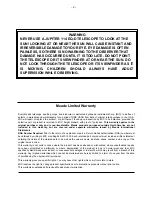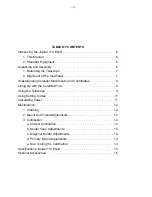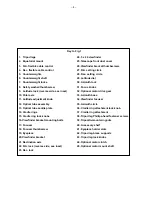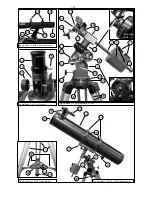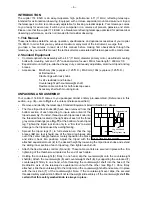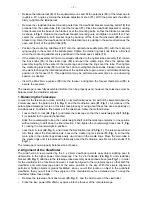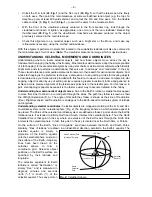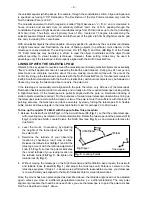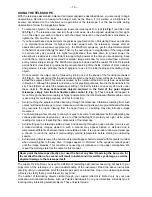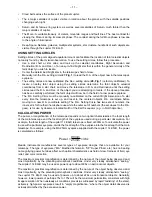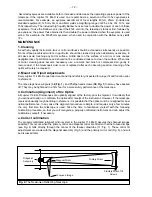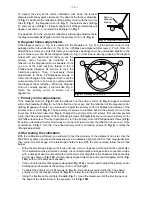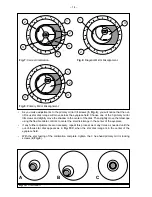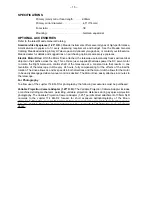
– 12 –
Assorted eyepieces are available both to increase and decrease the operating eyepiece power of the
telescope. If the Jupiter 114 EQ-D is used on a regular basis, a selection of four to five eyepieces is
recommended. For example, an eyepiece assortment of focal lengths 40mm, 25mm (Included as
standard equipment), 12.5mm, 9mm, and 6mm yields a magnifying range of 22.5x, 36x, 72x, 101x, and
150x respectively. The included high quality Barlow Lens serves to double the power of each of these
eyepieces. To use the Barlow Lens, insert the #126 unit into the telescope’s focuser first, followed by
an eyepiece; the power thus obtained is then double the power obtained when the eyepiece is used
alone. For example, the MA 25mm eyepiece, when used in conjunction with the Barlow Lens yields
72x.
MAINTENANCE
1. Cleaning
As with any quality instrument, lens or mirror surfaces should be cleaned as infrequently as possible.
Front surface aluminized mirrors, in particular, should be cleaned only when absolutely necessary. In
all cases avoid touching any mirror surface. A little dust on the surface of a mirror or lens causes
negligible loss of performance and should not be considered reason to clean the surface. When lens
or mirror cleaning does become necessary, use a camel’s hair brush or compressed air gently to
remove dust. If the telescope’s dust cover is replaced after each observing session, cleaning of the
optics will rarely be required.
2. Mount and Tripod Adjustments
Every Jupiter 114 EQ-D equatorial mount and tripod is factory inspected for proper fit and function prior
to shipment.
The tripod legs have wingnuts (39, Fig. 1), and Phillips-head screws (38, Fig. 1) that may have backed
off. They may be tightened to a firm feel for a more sturdy performance of the telescope.
3. Collimation (Alignment) of the Optics
All Jupiter 114 EQ-D telescopes are optically aligned at the factory prior to shipment. It is unlikely that
you will need to align, or collimate, the optics after receipt of the instrument. However, if the telescope
received unusually rough handling in shipment, it is possible that the optics must be re aligned for best
optical performance. In any case this alignment procedure is simple, and requires only a few minutes
the very first time the telescope is used. Take the time to familiarize yourself with the following
collimation procedure, so that you will recognize a properly collimated instrument and can adjust the
collimation yourself, if necessary.
a. Correct collimation
The properly collimated (aligned) mirror system in the Jupiter 114 EQ-D assures the sharpest images
possible. This occurs when the primary mirror and diagonal mirror are tilted so that the focused image
(see Fig. 4) falls directly through the center of the focuser drawtube (17, Fig. 1). These mirror tilt
adjustments are made with the diagonal assembly (Fig. 5) and the primary mirror cell (Fig. 6), and will
be discussed later.
Monture
Diagonale
Miroir Diagonal
Image Focalisée
Miroir Primaire
Vis D'inclinaison
du Miroir Primaire
Fig. 4: The Newtonian Reflecting Telescope.
Diagonal
Assembly
Diagonal Mirror
Focused Image
Primary Mirror
Promary Mirror-Tilt
Screws


